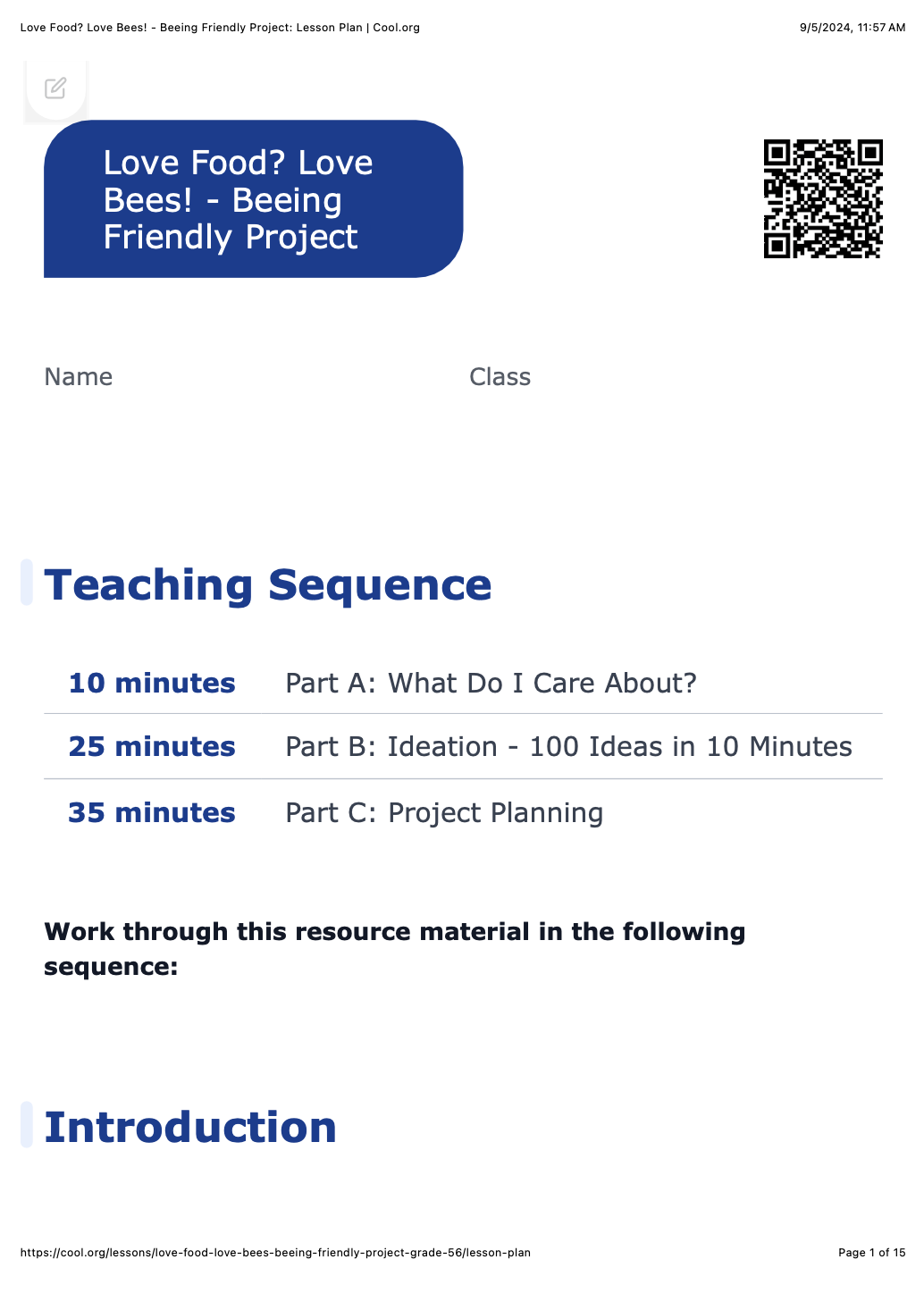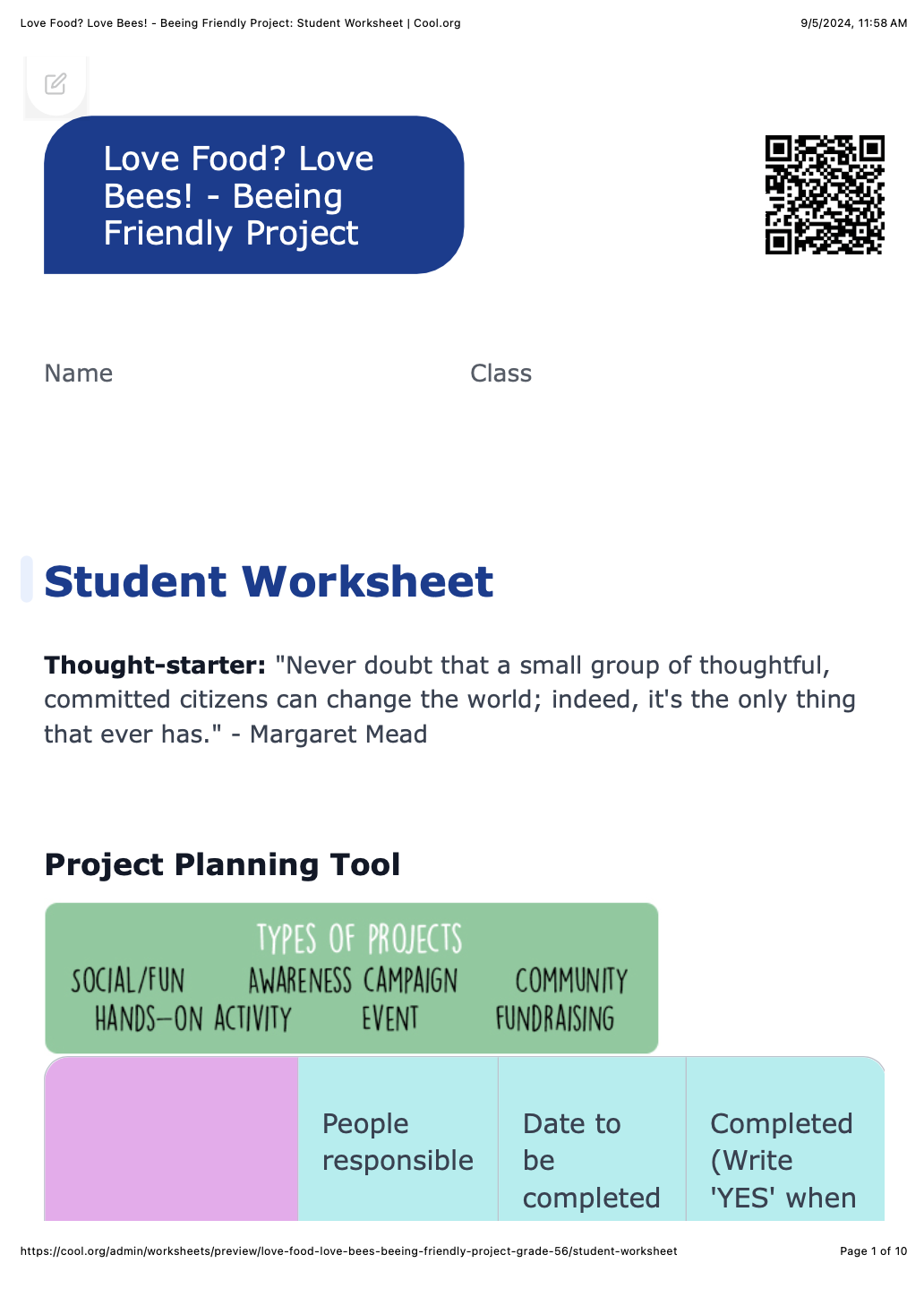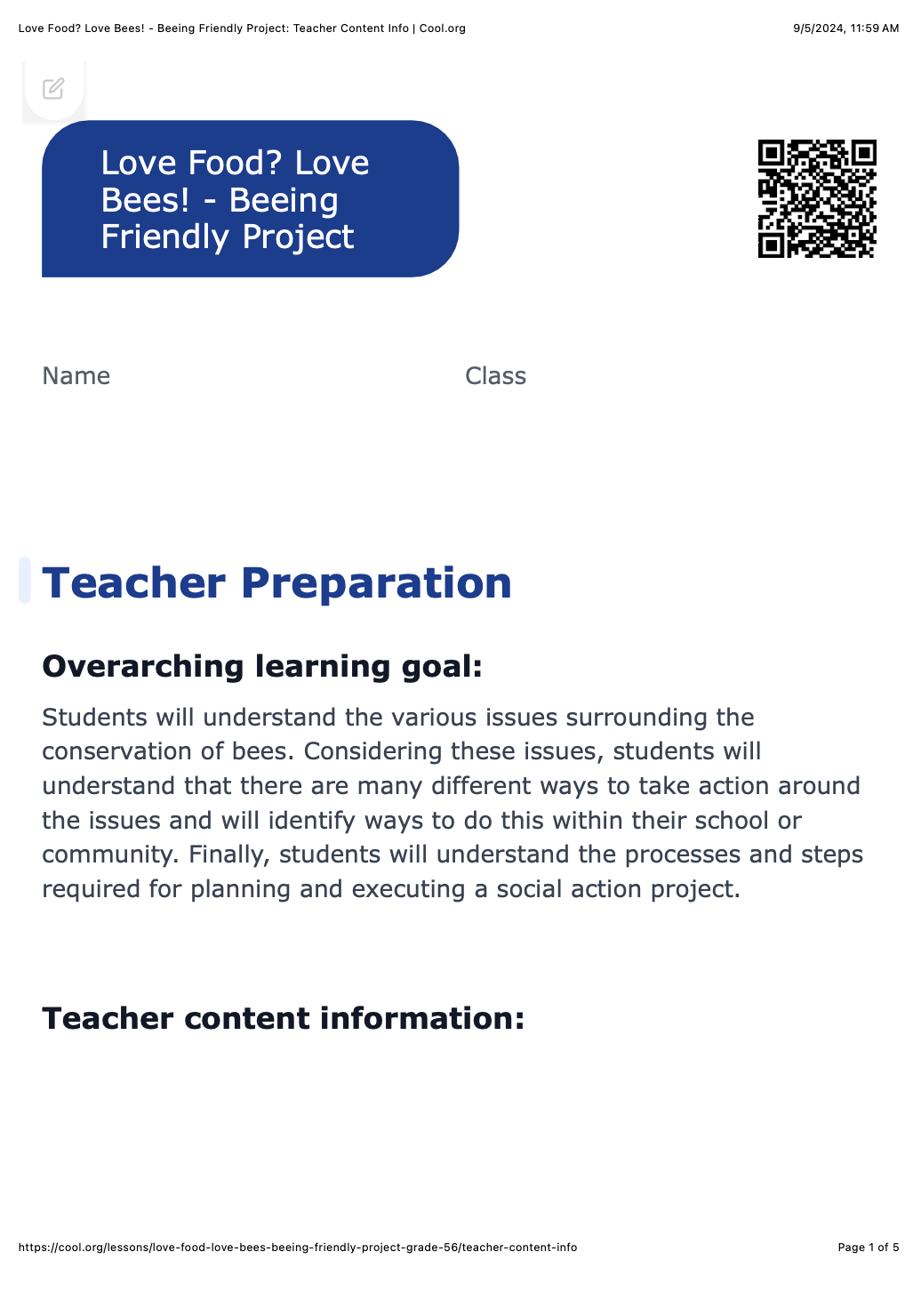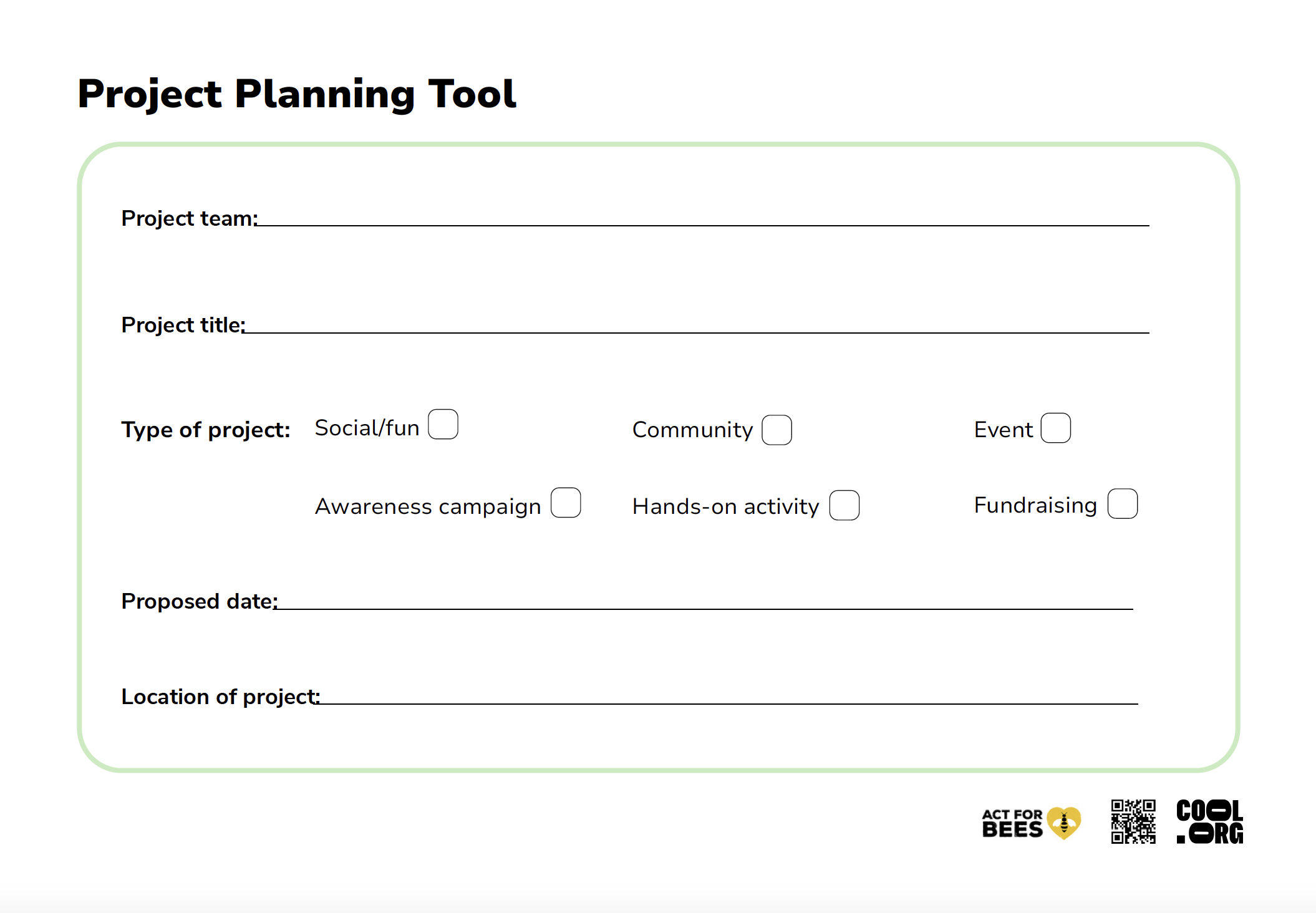Lesson summary
In this lesson students synthesise what they have learned from the Love Food? Love Bees! unit and develop a plan for taking action around themes presented in the unit. Students will work in groups to select a theme that is important to them, then brainstorm an idea for action. Next, they collaboratively plan their action project and execute this plan. Finally, students are asked to reflect upon the success of their project and their role in creating and executing the project.
Learning intentions
Students will...
- synthesise their learning from the Love Food? Love Bees! unit to develop a plan for taking action on an important theme.
- work collaboratively to plan, execute, and reflect on an action project that addresses themes from the unit.
Success criteria
Students can...
- identify a theme from the unit and develop a meaningful action project related to it and reflect on the success of their project and their role in its execution.
Lesson guides and printables
Lesson details
Skills
This lesson is designed to build students’ competencies in the following skills:
- critical thinking
- collaboration
- creativity
- communication
- ethical understanding
- social skills
- initiative
- digital literacy
- community engagement
- problem solving
- global citizenship
Curriculum Mapping
This lesson concludes the Love Food? Love Bees! unit. It provides students with the opportunity to apply their knowledge to create a social action project or awareness raising campaign around an issue they connected with through the unit. As a result this lesson can be integrated into a number of subject areas as the focus is on developing the General Capabilities of the Australian Curriculum and 21st century skills.
General capabilities: Literacy, Critical and Creative Thinking, Personal and Social Capability, Ethical Understanding, ICT Capability.
Cross-curriculum priority: Sustainability OI.1, OI.2, OI.5, OI.7, OI.8.
Unit of work: Love Food? Love Bees!
Time required: 60+ mins (this lesson could take between three and six sessions). Time should be determined by teacher prior to commencing the lesson so that students have a clear expectation of the deadline in which to execute their project.
Level of teacher scaffolding: High – oversee project planning and project execution.
UN Sustainable Development Goals
- Target 15.5: Take urgent and significant action to reduce the degradation of natural habitats, halt the loss of biodiversity and, by 2020, protect and prevent the extinction of threatened species.
Resources Required
- Student Worksheet – one copy per student OR computers/tablets to access the online worksheet
- Project Planning Tool, Project Checklist
- Butcher’s paper and textas, online stopwatch
Additional Info
This lesson has been created in partnership with ACT for Bees. ACT for Bees is a not-for-profit organisation taking action to preserve these essential pollinators, ensuring a food-secure future.
Related Professional Learning
How To Teach Sustainability With Hope
Quick summary: This course is for both primary and secondary teachers of all subjects, but especially for English, Science, Humanities and Geography teachers who are covering climate change and the cross-curriculum priority of sustainability.





Welcome back!
Don't have an account yet?
Log in with:
Create your free Cool.org account.
Many of our resources are free, with an option to upgrade to Cool+ for premium content.
Already have an account?
Sign up with:
By signing up you accept Cool.org's Terms and Conditions(Opens in new tab) and Privacy Policy(Opens in new tab).